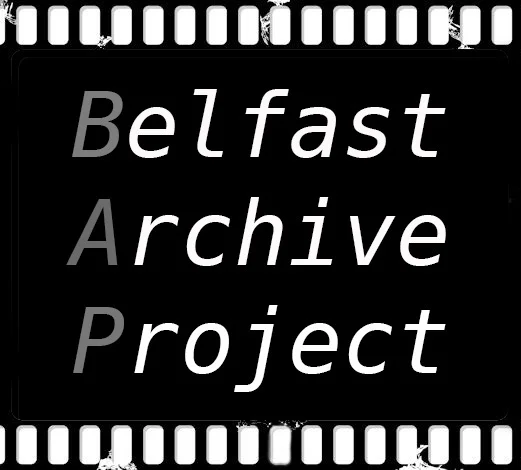Judah Passow
Judah Passow has been working on assignments for American and European magazines and newspapers since 1978.
Based in London, his work has been published extensively by all of the leading British newspapers and their associated magazines, including the Guardian, the Observer, the Times and Sunday Times, the Daily and Sunday Telegraph and the Independent. Abroad, he has contributed regularly to Time, Newsweek and the New York Times in America, Der Spiegel and Die Zeit in Germany, Elsevier magazine and De Volkskraant in Holland, Das Magazin in Switzerland and L'Express in France.
A winner of four World Press Photo awards for his coverage of conflict in the Middle East, his photographs have been exhibited in London, York, Leeds, Glasgow, Amsterdam, Paris, Arles, Perpignan, Tel Aviv, New York, and Washington D.C.
In 1995 Passow formed Further Vision, a new media production company, to explore the possibilities for combining traditional photojournalism with digital technology. His CD-ROM, Days Of Rage, based on his work in Beirut from 1982 to 1985, received critical acclaim in the British press for its journalistic integrity and technological innovation.
He was an Artist In Residence at the Institute of Contemporary Arts in London in 1998, where he directed the New Media Centre's Digital Photojournalism Laboratory, and has served as a consultant to the Soros Foundation's Open Society Institute, training photojournalists on newspapers in the former Eastern Europe. He is a frequent lecturer on photojournalism at British universities.
His book Shattered Dreams, looking back at twenty five years of his coverage of the Israeli/Palestinian conflict, was published in 2008 and accompanied by major exhibitions in London, Hamburg and Jerusalem. It was nominated for the Deutsche Borse Photography Prize.
Passow graduated from Boston University in the United States in 1971.
Photography critic Steve Mayes noted in Reuel Golden's book "Witness: The World's Greatest News Photographers", that "Judah Passow has an extraordinary ability to distil complex situations into powerfully loaded images that are deceptively simple to look at. He starts with a conceptual overview of a political or social situation and looks for circumstances that demonstrate the human reality, producing clean, graphic frames that combine metaphor and actuality. His signature black-and-white technique has cut-glass clarity and beauty with a sensual quality that seduces the viewer to engage with even the grimmest reality. He is driven to extremes of professional endeavour by his idealistic belief in the power of photography and technical perfectionism."
Divis Flats by Robin Livingstone
When my old pal Frankie Quinn showed me Judah Passow’s Divis Flats portfolio for a feature we were preparing for the paper on the exhibition, the pictures gave me a jolt like an adrenalin syringe in the sternum. This wasn’t the usual here-today-gone-tomorrow photographer’s work we were so used to seeing. This wasn’t a guy who had got a taxi from the Europa, shot off a roll in a half-hour and then got back to the hotel in time for dinner. This was the Flats I knew and didn’t love. This was the place I used to live. These were the people I used to know.
Viewing the images, I heard again the shrieks of children playing on the concrete dragon; smelled the piss on the concrete stairs; saw the little black eyes of the rats shining from the blocked-up rubbish chutes; felt the ever-present faint sting in my eyes of the CS gas that stuck to the balcony walls and ceilings.
Divis Flats was a grim place when our flat was new in 1970; it was a grimmer place when we moved out a year later. Behind the egg-box walls and doors we turned the TV up so we couldn’t hear the TV next door, or the toilet flushing. Our TV never covered the sound of the shooting.
Divis Flats was not a story of the human spirit triumphing over adversity, no matter what anybody tells you. Divis Flats won. Divis Flats beat us – it beat everybody who ever walked backwards up those pissy steps hauling a sofa. That’s why these pictures punched me in the stomach. They’re pictures of people fighting and people losing; sometimes smiling, sometimes laughing – but losing, and losing badly. And we lost, of course, because the game was rigged.
I’m nine and I’m walking along the balcony near our Pound Walk flat. There’s a big guy with a washing machine perched precariously on the balcony ledge. He’s balancing the washing machine and trying to look down at the same time. I skip up and straddle the ledge with practised ease. There’s a British Army foot patrol 30 feet down and, as usual, they’re looking skywards as they walk. They think the washing machine is somebody moving in and on they come. They’re below us now and the big guy doesn’t have to push the washing machine, he just lets it go. It falls, the flex snaking after it, the plug smashing against the concrete. The soldiers take a step back and watch it. The washing machine disintegrates as it hits the ground. The big fella is still there, his two hands on the ledge, peering down, like Kilroy in the graffiti. The soldiers look up at him and me and they start laughing because they’re glad the washing machine didn’t explode. I suppose they don’t shoot me because I’m wearing shorts. The big guy laughs and I’m laughing too. I’m laughing the way everybody laughed in Divis Flats – like if you didn’t you’d throw yourself off the balcony.
That was my Divis Flats – the Divis Flats Judah Passow’s camera captured.
Robin Livingstone.
http://www.culturenorthernireland.org/reviews/visual-arts/divis-flats-1982
100% of every donation goes directly to programming. We deeply appreciate your support!
Social media
-
Great book launch for Michael McCann at Cultúrlann! Pick up a copy of his Burnt Out: How the Troubles Began!… https://t.co/M9GHarkXCG
-
RT @Inter_Arch: Nice to see more material on the Belfast Archive website. Includes Gerry Collins shots of Bombay St in August 1969… https://t.co/kgtGGySLiK



















